THINGS TO DO IN GDANSK
What to do?Your 2023 Gdansk Travel Guide
Customer reviews
Trustrank 5/5 based on 4+ customer reviews.
Free Cancellation. Stag goes Free (12+)
94% of our guests say we're surprisingly awesome!
STRESS-FREE
Check prices online and secure dates now. No waiting. No quotes. No surprises
LOCAL AUTHORITY
Friendly support, no small print, flexible terms. Dedicated teams of local heroes
SAFE
Est. in 2006 under EU law. Secure online payments.
FAST
Friendly support, no small print, flexible terms. Dedicated teams of local heroes
GDANSK SIGHTSEEING
Location:
Gdańsk is a city located on the Baltic Sea coast in northern Poland. It is situated at the mouth of the Motława River and is part of the larger metropolitan area known as the Tricity, which also includes the cities of Gdynia and Sopot.

History:
Gdańsk has a rich and diverse history that spans over a thousand years. Here's an overview of its historical milestones:
1. Early History: The area of present-day Gdańsk has been inhabited since prehistoric times, with evidence of settlements dating back to the Stone Age. The region was influenced by various Baltic tribes and later came under the control of the Polish Piast dynasty.
2. Hanseatic City: Gdańsk experienced significant growth and prosperity during the Middle Ages as a member of the Hanseatic League, a powerful trading alliance. The city became a major center for maritime trade, connecting Western Europe with the Baltic Sea region and beyond. Gdańsk played a vital role in the exchange of goods, culture, and ideas.
3. Polish-Lithuanian Commonwealth: In the 16th century, Gdańsk came under the rule of the Polish-Lithuanian Commonwealth. It gained autonomy and became known as the Royal City of Gdańsk. The city flourished culturally and economically, with a diverse population that included Poles, Germans, Jews, and others.
4. Treaty of Westphalia: In 1648, the Treaty of Westphalia was signed in Gdańsk, marking the end of the Thirty Years' War. The treaty recognized the independence of the Dutch Republic and the Swiss Confederation and brought stability to the region.
5. Partitions of Poland: In the late 18th century, Gdańsk, along with the rest of Poland, was partitioned by neighboring powers. The city came under Prussian control and experienced a decline in its political and economic significance.
6. Free City of Danzig: After World War I, Gdańsk became the Free City of Danzig, under the administration of the League of Nations. It served as an independent city-state with its own government and customs. The interwar period saw tensions between Polish and German populations in the city.
7. World War II: Gdańsk was heavily bombed and damaged during World War II. The city's population suffered greatly, and its historic buildings and infrastructure were extensively destroyed.
8. Post-War Period: After the war, Gdańsk was incorporated into Poland and underwent a process of reconstruction and rebuilding. The city's historic center, including the iconic Gdańsk Crane and numerous merchant houses, was carefully restored to its pre-war appearance. Gdańsk became an important industrial and cultural center in the post-war era.
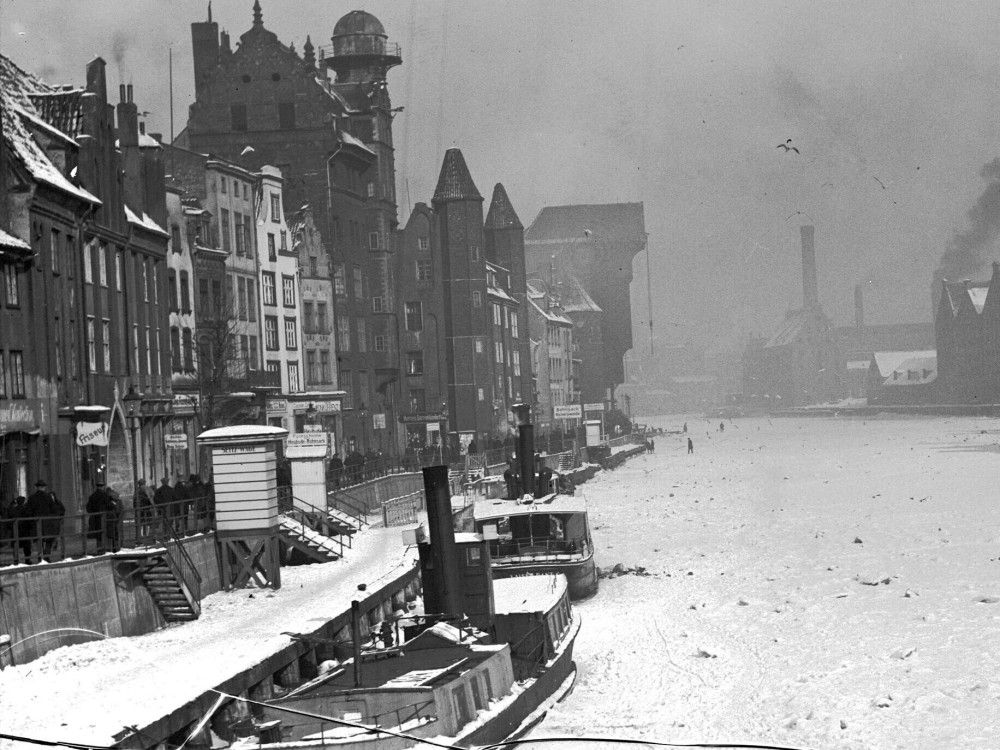
Trivia:
1. Solidarity Movement: Gdańsk was the birthplace of the Solidarity Movement, a Polish trade union and social movement that played a crucial role in the fall of communism in Poland and other Eastern European countries.
2. The Gdańsk Shipyard: The Gdańsk Shipyard, also known as the Lenin Shipyard during the communist era, was the site of major strikes and protests led by the Solidarity Movement in the 1980s. It is considered a symbol of resistance and the fight for workers' rights.
3. Amber: Gdańsk is renowned for its amber, known as the "Baltic gold." The city has a long history of amber trade, and visitors can find a wide range of amber products, including jewelry and decorative items, in local markets and shops.
4. Long Market: Gdańsk's Long Market (Długi Targ) is a historic street in the heart of the city's Old Town. It is lined with colorful merchant houses and features the iconic Neptune Fountain and the Arthur's Court building. The Long Market is a vibrant hub of activity, with numerous cafes, restaurants, and shops.
5. St. Mary's Church: Gdańsk is home to St. Mary's Church, one of the largest brick churches in the world. Its construction began in the 14th century and took several centuries to complete. The church's towering Gothic spires dominate the city's skyline.
6. Westerplatte: Westerplatte, located in Gdańsk's harbor, was the site of the first battle of World War II. The Polish garrison stationed there bravely defended against German attacks for over a week.
7. Gdańsk Shipyards: The Gdańsk Shipyards, in addition to being a historic site, continue to be a major center for shipbuilding and repair in Poland.
8. Artistic Heritage: Gdańsk has a rich artistic heritage and has been a source of inspiration for many renowned writers, painters, and musicians throughout history.
9. The Green Gate: The Green Gate is an iconic building in Gdańsk's Long Market. It served as the formal residence of Polish monarchs during their visits to the city.
10. International Fair: Gdańsk hosts the International Fair, a major trade event that attracts exhibitors and visitors from around the world.
Gdańsk's location, historical significance, and cultural heritage make it a fascinating city to explore, offering a blend of maritime history, architectural beauty, and a vibrant atmosphere.

When visiting Gdansk, there are several top sights and attractions worth exploring. Here are some of the best things to see:
TOP 20 THINGS TO SEE IN GDANSK
1. St. Mary's Church: St. Mary's Church, also known as Bazylika Mariacka in Polish, is a magnificent Gothic church located in the heart of Gdańsk's Old Town. Its construction began in 1343 and took almost 150 years to complete. The church is a masterpiece of medieval architecture, characterized by its soaring towers, intricate ornamentation, and imposing size.One of the most striking features of St. Mary's Church is its massive size. It is considered the largest brick church in the world and can accommodate up to 25,000 people. The interior of the church is equally impressive, with a spacious nave, ornate altars, and beautiful stained glass windows. The breathtaking vaulted ceiling adds to the grandeur of the space.

2. The Main Town Hall: The Main Town Hall is a historic building located in the heart of Gdańsk's Old Town. It dates back to the 14th century and houses the Gdańsk History Museum. Visitors can explore the museum's exhibits and enjoy stunning views of the city from the tower.
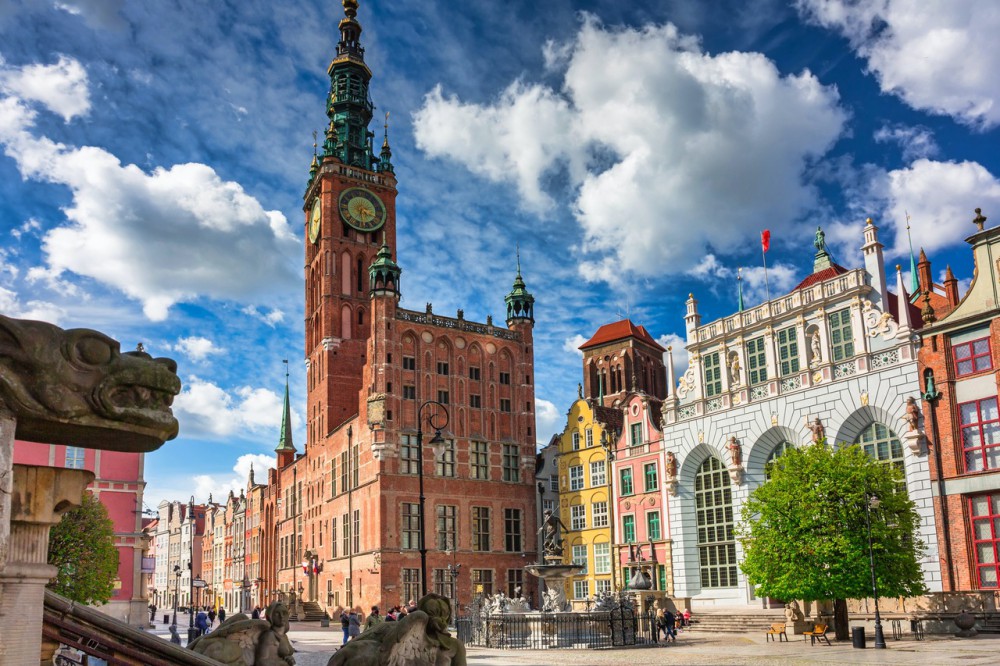
3. Neptune Fountain: The Neptune Fountain is an iconic symbol of Gdańsk. It features a statue of Neptune, the Roman god of the sea, and is located in the historic Long Market. The fountain is a popular meeting point and a great spot to take photos.
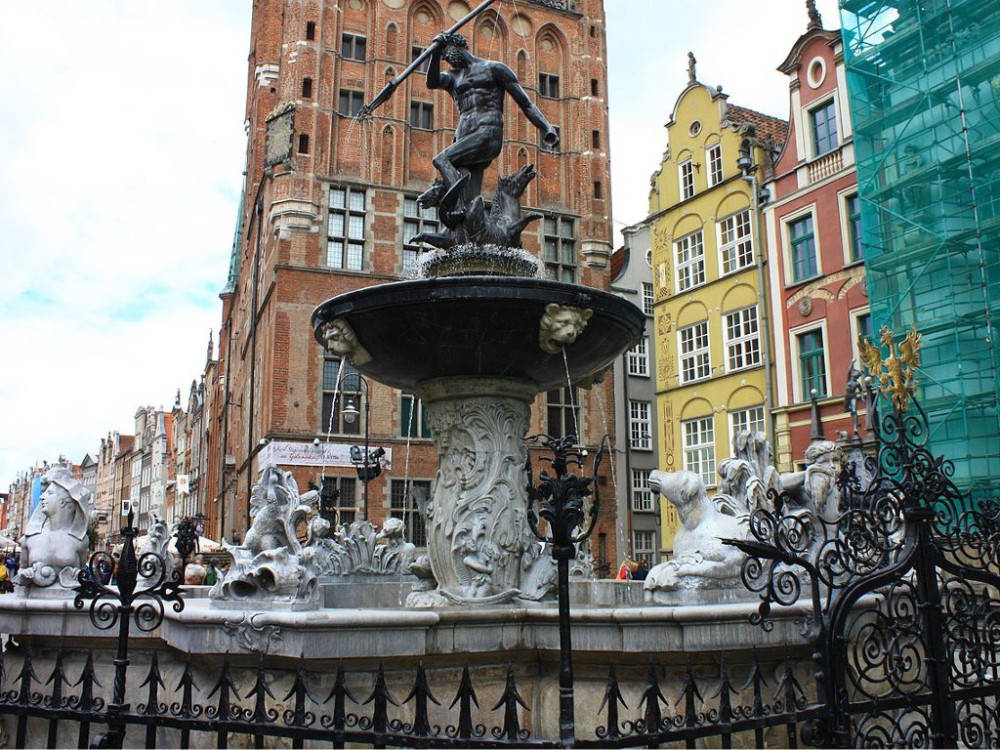
4. Long Market: The Long Market is a picturesque pedestrian street lined with colorful facades, cafes, and shops. It is one of the main attractions in Gdańsk's Old Town and offers a vibrant atmosphere. Visitors can enjoy shopping, dining, and soaking up the historic ambiance.
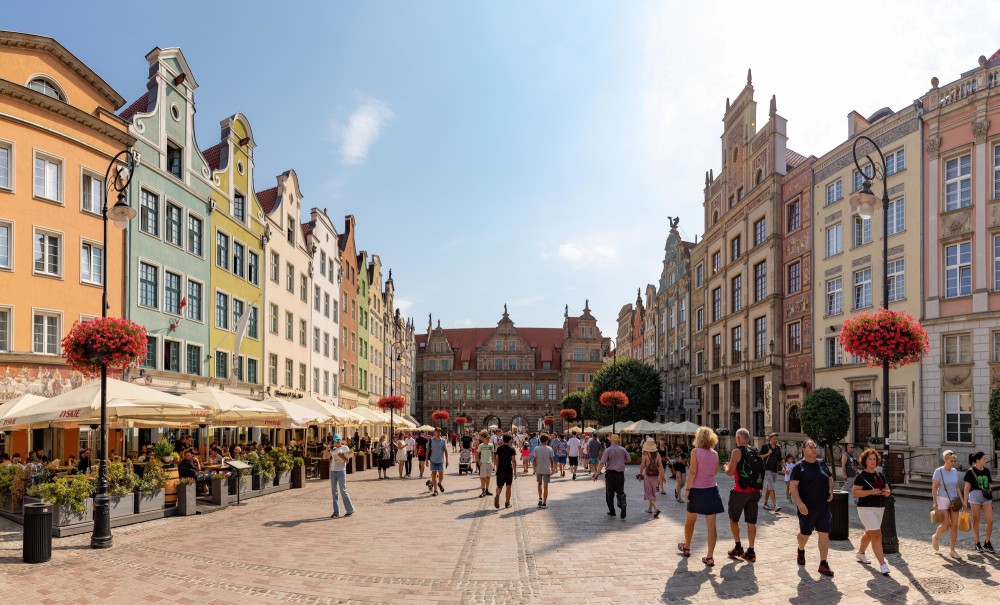
5. Artus Court: Artus Court is a magnificent building located on the Long Market. It was once a meeting place for wealthy merchants and served as a center for social and cultural activities. Today, it houses a museum that showcases the history and splendor of the building.

6. Gdańsk Crane (Żuraw): The Gdańsk Crane is a medieval crane and a symbol of the city's maritime heritage. It is one of the few preserved medieval port cranes in Europe. Inside the crane, there is a Maritime Museum where visitors can learn about Gdańsk's maritime history.
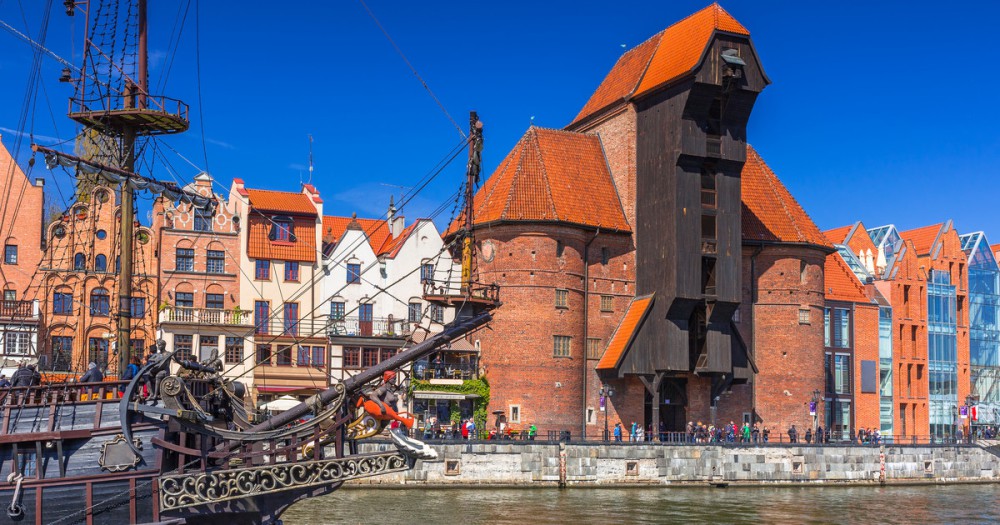
7. Oliwa Cathedral: Oliwa Cathedral is located in the Oliwa district of Gdańsk. It is a beautiful cathedral renowned for its stunning organ, which has over 7,000 pipes. Visitors can attend organ concerts and explore the cathedral's peaceful gardens.

8. Westerplatte: Westerplatte is a historic site located at the entrance to the Port of Gdańsk. It is famous as the place where World War II began when the German battleship Schleswig-Holstein opened fire on the Polish Military Transit Depot. Visitors can pay homage to the fallen and explore the museum dedicated to the events that took place here.
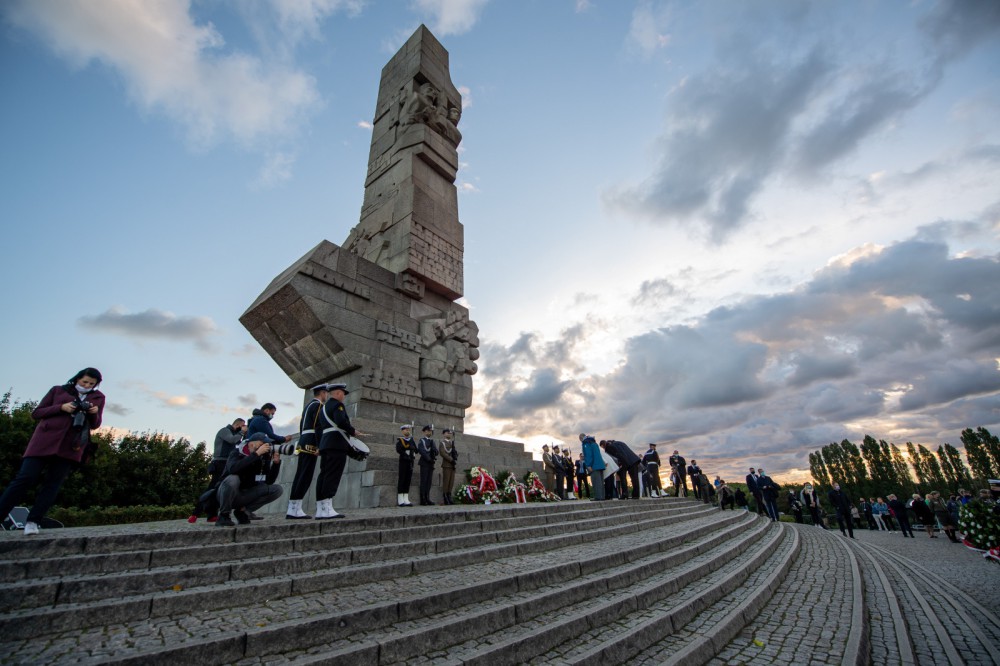
9. European Solidarity Centre: The European Solidarity Centre is a museum and cultural institution dedicated to the history of the Solidarity movement. It showcases the struggle for workers' rights and democracy in Poland and the role it played in the fall of communism. The museum offers interactive exhibits, multimedia presentations, and archival materials.

10. Museum of the Second World War: The Museum of the Second World War is a comprehensive museum that chronicles the impact of World War II, with a particular focus on Gdańsk and Poland. It features a wide range of exhibits, including artifacts, multimedia displays, and personal testimonies.

11. Amber Museum: Gdańsk is known for its amber, often referred to as "Baltic gold." The Amber Museum explores the fascinating history, significance, and craftsmanship associated with this gemstone. Visitors can learn about the extraction, processing, and artistic use of amber throughout the centuries.
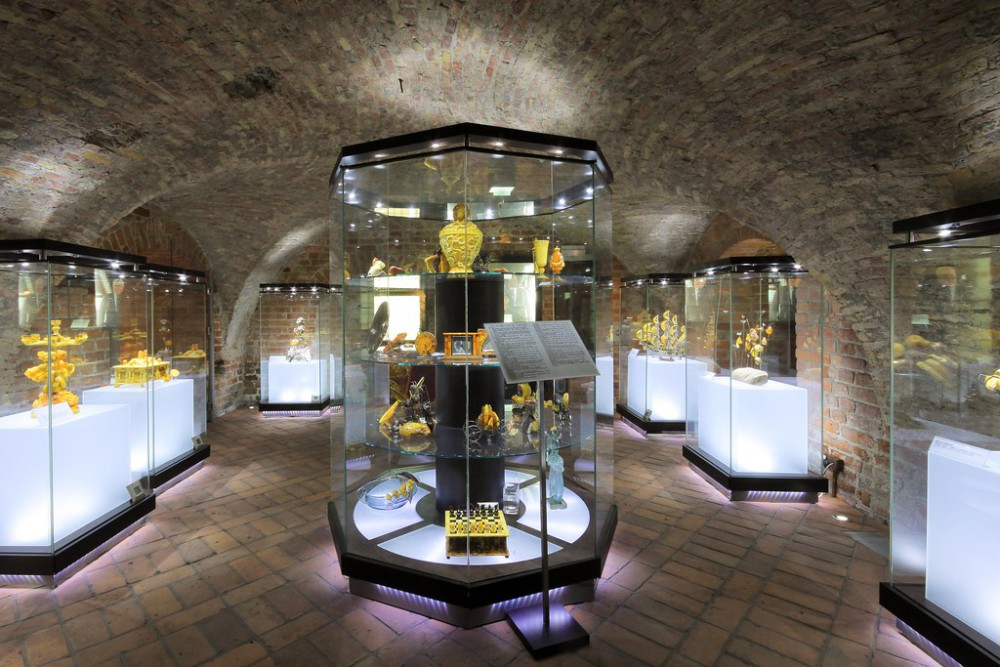
12. Gdańsk Shipyard: The Gdańsk Shipyard is the birthplace of the Solidarity movement and played a significant role in the fight against communism in Poland. Visitors can learn about the shipbuilding industry, the strikes of the 1980s, and the impact of Solidarity in shaping Poland's history.
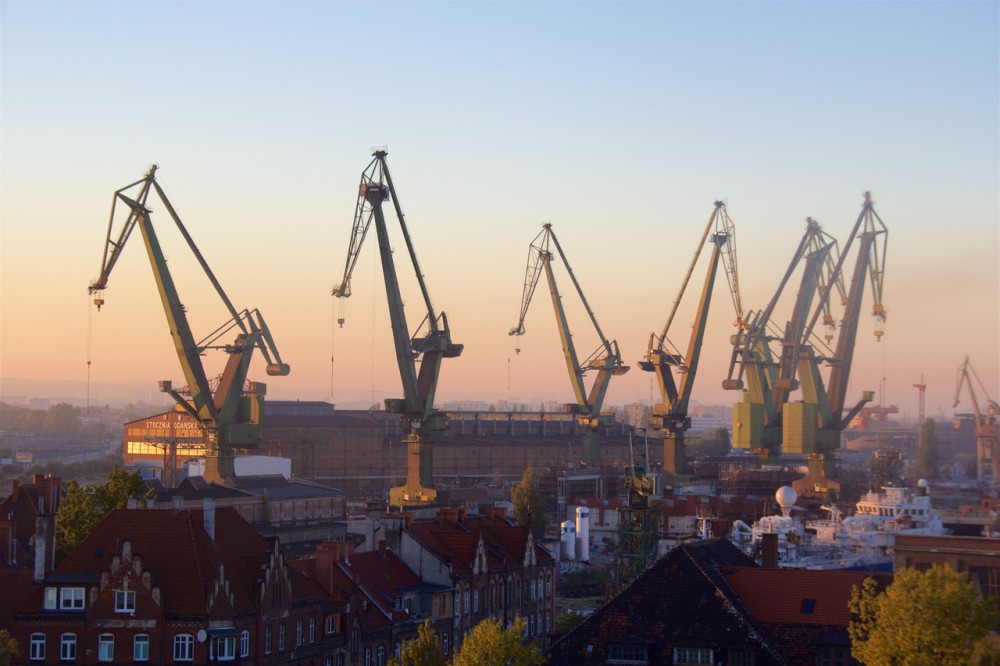
13. Mariacka Street: Mariacka Street is a charming street famous for its beautiful architecture and amber shops. It is lined with historic buildings, cobblestone pavement, and cozy cafes. Visitors can browse through amber jewelry stores and enjoy the unique atmosphere of the street.

14. Gdańsk Shakespeare Theatre: The Gdańsk Shakespeare Theatre is a modern theater that pays tribute to the works of William Shakespeare. It hosts performances of Shakespearean plays as well as other theatrical productions, concerts, and events. The theater's architecture and design are also worth admiring.
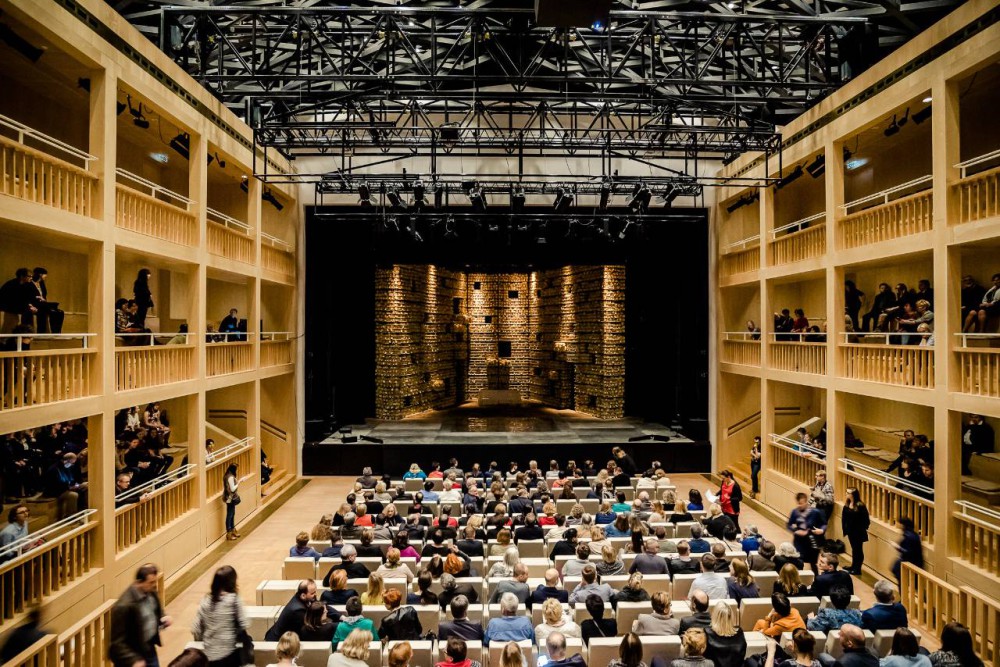
15. Westerplatte Peninsula Park: Westerplatte Peninsula Park offers a tranquil escape from the city's bustling streets. It is a scenic park located on a peninsula and provides stunning views of the Baltic Sea. Visitors can enjoy leisurely walks, picnics, and relax in the peaceful surroundings.

16. National Maritime Museum: The National Maritime Museum in Gdańsk is a maritime-themed museum that showcases the history and significance of the sea. It features a wide range of exhibits, including historic ships, navigational instruments, maritime artifacts, and artworks. Visitors can explore various aspects of seafaring and learn about Poland's maritime heritage.
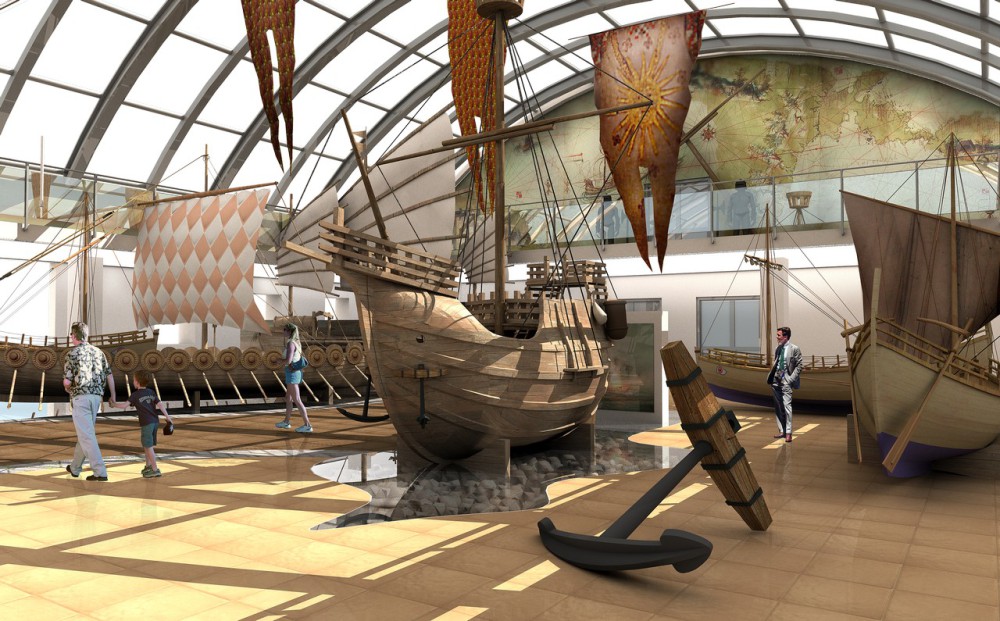
17. Gdańsk Zoo: Gdańsk Zoo is a family-friendly attraction where visitors can see a variety of animals from around the world. The zoo is home to species such as lions, elephants, giraffes, polar bears, and penguins. It offers educational programs, feeding shows, and a chance to connect with nature.

18. St. Catherine's Church: St. Catherine's Church is a historic church located in Gdańsk's Old Town. It is known for its intricate brickwork and impressive interior. Visitors can admire the architectural beauty, ornate decorations, and experience the peaceful ambiance inside the church.
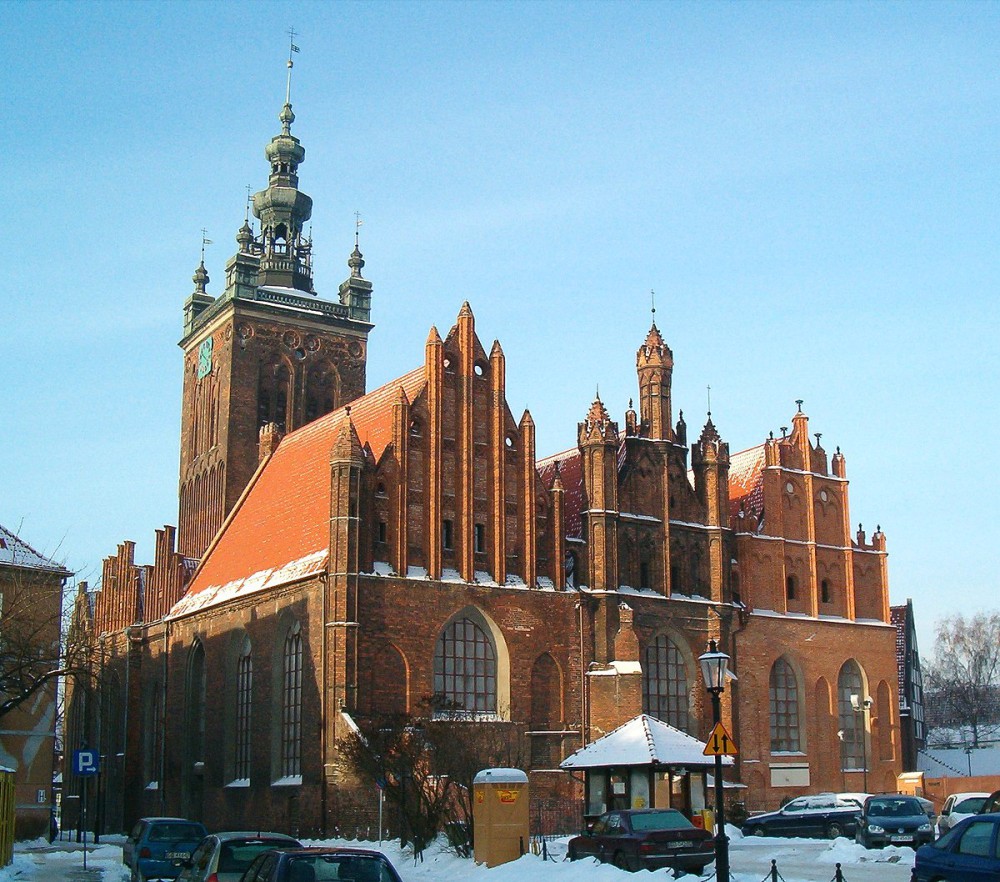
19. Motława River Embankment: The Motława River Embankment is a scenic waterfront area in Gdańsk. Visitors can take a boat tour along the river and enjoy picturesque views of the city's architecture, including colorful merchant houses and historic warehouses. The area is also lined with restaurants and cafes, offering a pleasant place to relax and dine.

20. Gdańsk Beaches: Gdańsk is blessed with beautiful sandy beaches along the Baltic Sea. Stogi Beach and Brzeźno Beach are two popular choices where visitors can spend a relaxing day sunbathing, swimming, or participating in water sports. These beaches offer a refreshing escape from the city and are perfect for enjoying the coastal scenery.

These are just some of the many highlights that Gdańsk has to offer. The city's rich history, architectural beauty, and cultural attractions make it a must-visit destination in Poland.
BOOK TRANSFERS / ACTIVITIES
Book the dates. No obligation.
WE START WORKING
A few days to talk to your friends
PAY DEPOSIT TO CONFIRM
....or cancel your booking. No hard feelings.
MEET YOUR GUIDE AT THE AIRPORT
Limos, party buses, private minivans...
ENJOY GDANSK ACTIVITIES
Friendly local guides, hotel pickup
TRANSFER BACK TO GDANSK AIRPORT
This is how heroes are made
GDANSK RESTAURANTS
Gdańsk, a vibrant city on the Baltic coast of Poland, offers a rich and diverse gastronomic scene. The city's cuisine combines traditional Polish dishes with influences from its coastal location and international flavors. Here are some highlights of Gdańsk's gastronomy:
Baltic Seafood: Gdańsk is renowned for its fresh seafood, thanks to its proximity to the Baltic Sea. Local fish such as herring, cod, and salmon are popular choices and are often prepared in various ways, including smoked, fried, or grilled. Fish restaurants and seafood markets offer a wide selection of dishes, from simple fish fillets to elaborate seafood platters.
Pierogi: Pierogi are a beloved Polish dish and a staple of Gdańsk's gastronomy. These dumplings are filled with ingredients such as potatoes, cheese, mushrooms, meat, or fruit, and can be boiled, fried, or baked. They are often served with sour cream or butter and make for a delicious and comforting meal.
Polish Soups: Gdańsk offers a range of traditional Polish soups that are hearty and full of flavor. One popular option is żurek, a sour rye soup made with fermented rye flour, often served with sausage and hard-boiled eggs. Another favorite is barszcz, a vibrant beetroot soup typically served with sour cream and accompanied by dumplings or meat.
Traditional Polish Dishes: Gdańsk is an excellent place to sample classic Polish dishes. Bigos, known as hunter's stew, is a rich and flavorful dish made with sauerkraut, various types of meat, and spices. Golonka, a tender and juicy roasted pork knuckle, is another traditional delicacy often served with sauerkraut and potatoes.
Cafés and Bakeries: Gdańsk boasts a charming café culture, with numerous cozy establishments serving aromatic coffee, teas, and delectable pastries. Whether you're craving a slice of poppy seed cake, a warm apple strudel, or a freshly baked bagel, the city's cafés and bakeries have you covered.
Craft Beer: Gdańsk has a thriving craft beer scene with several breweries producing a wide range of unique and flavorful beers. Many breweries offer tours and tastings, allowing visitors to experience the local beer culture firsthand. Gdańsk's craft beer bars and pubs also provide a great opportunity to sample a variety of local brews.
International Cuisine: Gdańsk embraces international flavors, and you can find restaurants offering a diverse range of cuisines. Whether you're in the mood for Italian pizza, Asian fusion, Mexican tacos, or Middle Eastern kebabs, there are plenty of options to explore and satisfy your international culinary cravings.
Street Food: Gdańsk's street food scene is lively and diverse. Food trucks and stalls offer a variety of quick and tasty bites, ranging from Polish sausages and kebabs to gourmet burgers and vegetarian/vegan options. Street food festivals and markets are also common in the city, providing an opportunity to indulge in a wide array of flavors.
Gdańsk's gastronomy combines traditional Polish dishes, fresh seafood, international influences, and culinary innovation. Whether you're a fan of local delicacies or eager to explore new flavors, Gdańsk offers a vibrant and delicious culinary experience.
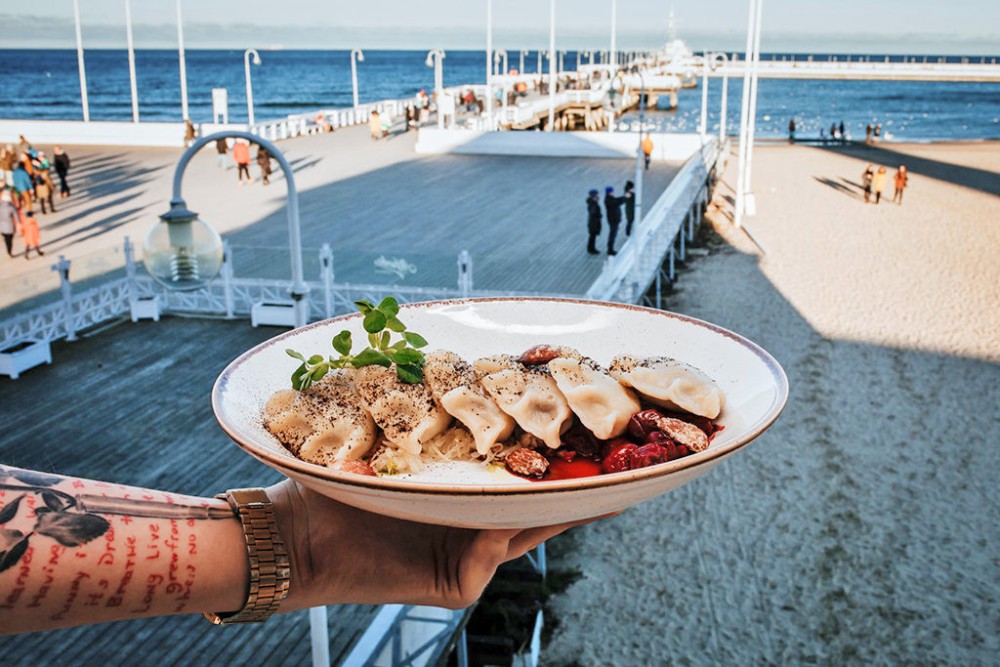
Gdańsk hosts a range of culinary events throughout the year that celebrate local and international cuisine. These events offer an excellent opportunity to explore the city's gastronomy, indulge in delicious food, and experience the vibrant culinary culture. Here are some notable culinary events in Gdańsk:
1. Gdańsk Restaurant Week: Gdańsk Restaurant Week is a popular event that takes place annually, typically in spring or autumn. During this week-long event, participating restaurants offer special menus or discounts, allowing locals and visitors to sample a variety of dishes from Gdańsk's culinary scene at affordable prices.
2. Gdańsk Beer Festival: Beer enthusiasts shouldn't miss the Gdańsk Beer Festival, held in summer. This event brings together breweries from Gdańsk and beyond, showcasing a wide selection of craft beers. Visitors can enjoy beer tastings, live music, food stalls, and a lively atmosphere celebrating the art of brewing.
3. Pierogi Festival: Pierogi, the beloved Polish dumplings, take center stage at the Pierogi Festival held in Gdańsk. The festival typically features various types of pierogi, both traditional and creative, prepared by local restaurants and vendors. Visitors can indulge in different fillings, flavors, and styles of this iconic Polish dish.
4. Gdańsk Wine Festivals: Wine lovers can delight in the wine festivals held in Gdańsk. These events often take place in summer or autumn and showcase a wide selection of Polish and international wines. Visitors can attend wine tastings, participate in workshops, and enjoy food pairings, all while learning about the world of wine.
5. Street Food Festivals: Gdańsk hosts several street food festivals throughout the year, bringing together a diverse range of food vendors. These festivals feature food trucks, stalls, and stands offering an array of international and local street food delicacies. It's a great opportunity to try different flavors, from gourmet burgers to exotic fusion dishes.
6. Gdańsk Easter Market: The Gdańsk Easter Market is a traditional event held during the Easter season. In addition to the festive atmosphere and various stalls selling crafts and decorations, the market features an abundance of Easter-themed food, including traditional Polish pastries, colorful eggs, and regional specialties.
7. Slow Food Festival: The Slow Food movement is celebrated in Gdańsk through the Slow Food Festival. This event promotes local, sustainable, and traditional food production and showcases local producers, artisans, and chefs. Visitors can enjoy tastings, workshops, and demonstrations focused on the importance of quality, ethical, and environmentally conscious food.
These are just a few examples of culinary events in Gdańsk. The city's dynamic food scene and rich culinary heritage ensure that there are always exciting events happening throughout the year, providing opportunities to explore the local flavors, engage with food producers, and celebrate the culinary diversity of Gdańsk.

Top 5 polish cuisine restaurants
1. Kubicki: Located in the heart of the historic Old Town, Kubicki is one of the oldest and most renowned restaurants in Gdansk. It offers a refined dining experience with a menu that features traditional Polish dishes prepared with a modern twist. The restaurant's elegant interior adds to the overall ambiance.
2. Gdańska Restaurant: Situated in a historical building near the Motława River, Gdańska Restaurant showcases the flavors of Polish cuisine in a warm and inviting atmosphere. The menu includes classic Polish dishes such as pierogi, żurek, and a variety of regional specialties, using locally sourced ingredients.
3. Restauracja Gvara: Restauracja Gvara combines Polish cuisine with international influences. Located in the historic Granary Island, the restaurant offers a menu that focuses on seasonal and regional ingredients. Dishes range from traditional Polish options to innovative creations, ensuring a diverse dining experience.
4. Stara Rzeźnia: Stara Rzeźnia is a rustic-style restaurant known for its traditional Polish cuisine and a warm, welcoming ambiance. The menu includes hearty dishes like pork knuckle, sausages, and homemade pierogi. The restaurant also offers a selection of Polish beers to complement the meal.
5. Café Ferber: Café Ferber, located in the Oliwa district of Gdansk, offers a cozy atmosphere and a menu that highlights Polish comfort food. The restaurant serves dishes such as bigos, gołąbki, and soups, using fresh, locally sourced ingredients. It's a great place to experience Polish homestyle cooking.
Top 5 Old Town restaurants
1. Restauracja Gdanska: Located in the heart of the Old Town, Restauracja Gdanska offers a delightful mix of Polish and international cuisine. The menu features traditional Polish dishes such as pierogi, fish dishes, and regional specialties. The restaurant has a cozy interior and an outdoor terrace with views of the historic buildings.
2. Piwna 47: Piwna 47 is a popular restaurant in the Old Town that specializes in Polish cuisine. They serve a variety of dishes, including pierogi, bigos, and grilled meats. The restaurant's rustic decor and friendly atmosphere make it a great place to experience traditional Polish flavors.
3. Café Elektryczny: Café Elektryczny is a unique restaurant situated in a historic tenement house in the Old Town. They offer a menu inspired by Polish and international cuisine, focusing on local and organic ingredients. The restaurant also hosts cultural events, adding to its lively atmosphere.
4. Gvara Restaurant: Gvara Restaurant, located in a beautifully restored building in the Old Town, offers a blend of Polish and international flavors. The menu features a variety of dishes prepared with seasonal and regional ingredients. The stylish interior and friendly service contribute to a pleasant dining experience.
5. Pod Lososiem: Pod Lososiem is a seafood restaurant located near the waterfront in the Old Town. It specializes in fresh fish and seafood dishes, including salmon, cod, and mussels. The restaurant's maritime-themed decor and waterfront views create a charming ambiance.
Top 5 budget restaurants
1. Bar Mleczny Neptun: Bar Mleczny Neptun is a classic Polish milk bar located in the heart of Gdansk. It offers affordable traditional Polish dishes, such as pierogi, soups, and hearty home-style meals. The prices are reasonable, and the portions are generous.
2. Pierogarnia Mandu: Pierogarnia Mandu is a cozy eatery that specializes in Polish dumplings, known as pierogi. They offer a variety of fillings, both savory and sweet, and the prices are budget-friendly. It's a great place to sample different types of pierogi without breaking the bank.
3. Kumpir Mamma Mia: Kumpir Mamma Mia is a popular spot for budget-friendly fast food in Gdansk. They serve loaded baked potatoes called "kumpir" with various toppings and fillings, including meats, vegetables, and sauces. The portions are generous, and the prices are wallet-friendly.
4. Street Food Gdansk: Street Food Gdansk is a vibrant food truck area located near the Gdansk Shipyard. It offers a wide range of affordable street food options, including burgers, sandwiches, Asian cuisine, and more. It's a great place to grab a quick and budget-friendly meal while exploring the city.
5. Pueblo Restaurant: Pueblo Restaurant offers a fusion of Mexican and Polish cuisine at affordable prices. They serve dishes like tacos, burritos, quesadillas, and Polish specialties with a Mexican twist. The restaurant has a casual and lively atmosphere, perfect for budget-conscious diners.
Top 5 mid-range restaurants
1. Restauracja Kubicki: Located in the historic Old Town, Restauracja Kubicki offers a combination of traditional Polish cuisine and international dishes. The restaurant is known for its elegant atmosphere and attentive service. Their menu features a range of options, including seafood, meat dishes, and vegetarian options.
2. Gvara Restaurant: Situated in a beautifully restored building in the heart of the Old Town, Gvara Restaurant offers a blend of Polish and international flavors. The menu showcases dishes prepared with local and seasonal ingredients, ensuring a fresh and flavorful dining experience.
3. Goldwasser: Goldwasser is a restaurant and bar known for its historical ambiance and traditional Polish cuisine. Located near the Motława River, it offers a diverse menu that includes regional specialties, seafood, and a variety of meat dishes. Their extensive drink selection includes the famous Goldwasser liqueur.
4. Pescatore: Pescatore is a seafood restaurant located in the Gdansk Shipyard area. It offers a modern and stylish setting with a focus on fresh seafood dishes. The menu includes a variety of seafood options, including fish, shellfish, and sushi, prepared with creativity and attention to detail.
5. Stara Rzeźnia: Stara Rzeźnia is a restaurant situated in a historic building in the Gdansk Shipyard area. It specializes in traditional Polish cuisine, including hearty meat dishes, homemade pierogi, and regional specialties. The restaurant's rustic interior and warm atmosphere create a cozy dining experience.
Top 5 sea food restaurants
1. Restauracja Gdańska: Located in the heart of the Old Town, Restauracja Gdańska specializes in traditional Polish cuisine with a focus on seafood. The restaurant offers a variety of fish and seafood dishes, including Baltic herring, salmon, and cod. The waterfront location provides a charming setting for a seafood dining experience.
2. Jadalnia Rybka: Jadalnia Rybka is a popular seafood restaurant situated near the Gdansk Marina. They offer a wide selection of fish and seafood dishes prepared using traditional recipes and locally sourced ingredients. The menu includes classics such as grilled fish, seafood soups, and fish platters.
3. Pescatore: Pescatore is a modern seafood restaurant located in the Gdansk Shipyard area. They specialize in serving a variety of fresh seafood, including fish, shellfish, and sushi. The menu features a fusion of Mediterranean and Asian flavors, prepared with creativity and finesse.
4. Restauracja Rybka: Restauracja Rybka is a seafood restaurant with a prime location along the Motława River. They offer a menu that focuses on seafood delicacies, including Baltic herring, trout, and seafood platters. The restaurant's terrace provides a picturesque view of the river and the Gdansk waterfront.
5. Machina Organika: Machina Organika is a unique seafood restaurant that offers a farm-to-table experience. They source their seafood from local fisheries, ensuring freshness and sustainability. The menu includes a variety of seafood dishes, and the restaurant also offers vegetarian and vegan options.
POLISH CUISINE
Polish cuisine is rich in flavors and traditions, characterized by hearty and comforting dishes that reflect the country's agricultural heritage and cultural influences. Here is an overview of Polish cuisine, its age, and history:
Polish cuisine is known for its diverse range of ingredients, including meats, fish, potatoes, grains, cabbage, mushrooms, dairy products, and various herbs and spices. The cuisine places an emphasis on natural and seasonal ingredients, and many dishes are prepared from scratch with traditional cooking techniques.
Traditional Polish dishes often feature hearty stews, soups, dumplings, and roasted meats. Common ingredients include potatoes, sauerkraut, beets, onions, dill, caraway seeds, and sour cream. Polish cuisine is also renowned for its rich selection of pastries, cakes, and desserts.
Polish cuisine has a long history that dates back centuries. It evolved through the influences of various cultures and historical events that shaped the region. Some key milestones include:
1. Medieval Period: Polish cuisine began to take shape during the Middle Ages when Poland was a kingdom. The cuisine of this era was based on local ingredients such as game, freshwater fish, grains, and vegetables. The royal court played a significant role in the development of Polish cuisine, introducing exotic spices and ingredients from distant lands.
2. Renaissance and Baroque Eras: During the Renaissance and Baroque periods, Polish cuisine became more elaborate and refined. The nobility embraced French and Italian culinary influences, leading to the introduction of new flavors, cooking techniques, and lavish banquets.
3. Partitioning of Poland: The partitioning of Poland in the late 18th century resulted in the country losing its independence and being divided among neighboring powers. This period had an impact on Polish cuisine as the country's culinary traditions continued to develop within the context of foreign influences.
4. Post-World War II: After World War II, Poland went through a period of reconstruction and political changes. Despite the challenges, traditional Polish dishes remained important in everyday life, emphasizing simplicity, affordability, and the use of local ingredients.
5. Modern Polish Cuisine: In recent years, there has been a renaissance of Polish cuisine, with a renewed focus on traditional recipes and techniques. Chefs and restaurateurs have been incorporating modern twists and innovative presentations while staying true to the roots of Polish gastronomy.
Polish cuisine has been shaped by factors such as historical events, cultural exchanges, and the agricultural resources of the region. It continues to evolve while retaining its deep-rooted traditions, making it an essential part of Poland's cultural heritage and a source of pride for its people.
Typical polish meals
Polish cuisine is known for its hearty and flavorful dishes that reflect the country's agricultural heritage and traditional cooking methods. Here are some typical Polish meals you can expect to find:
1. Pierogi: Pierogi are dumplings made from unleavened dough and filled with various ingredients. Common fillings include mashed potatoes, cheese, meat, mushrooms, and fruits. They are typically boiled and served with melted butter, sour cream, or fried onions.

2. Bigos: Bigos, also known as hunter's stew, is a traditional Polish dish made with sauerkraut, fresh cabbage, and a variety of meats, such as sausage, bacon, and often beef or game meats. It is cooked slowly to allow the flavors to meld and is often enjoyed during festive occasions.
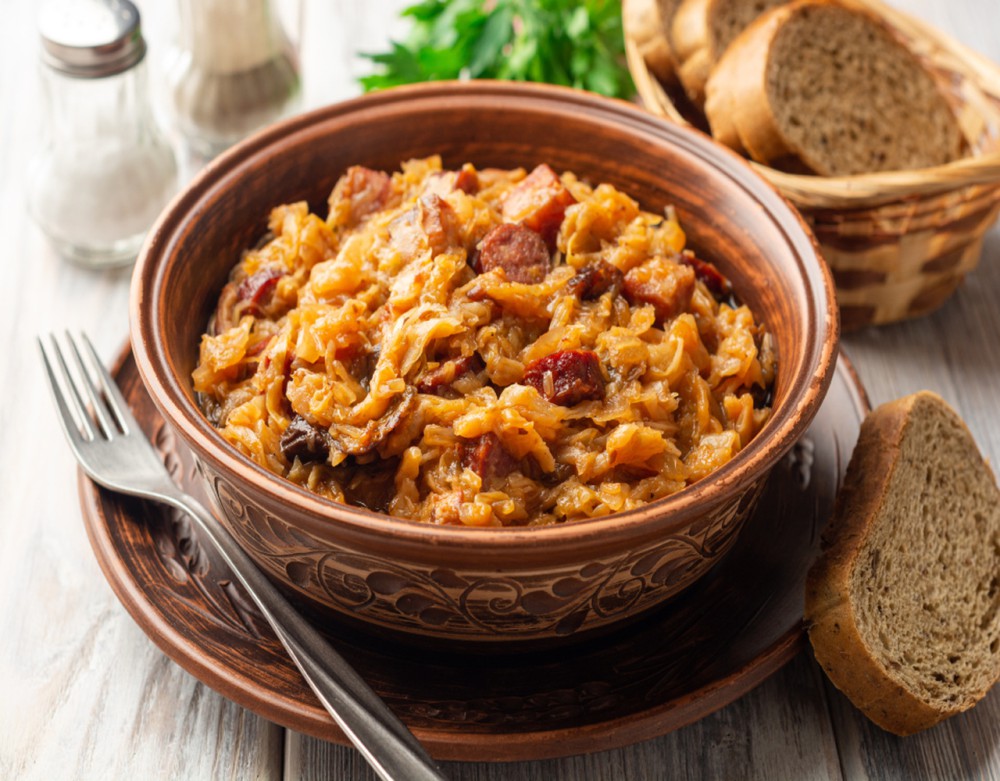
3. Żurek: Żurek is a sour rye soup that is a staple in Polish cuisine. It is made from fermented rye flour and typically includes sausage, potatoes, mushrooms, and hard-boiled eggs. The soup has a tangy flavor and is often served with a dollop of sour cream.
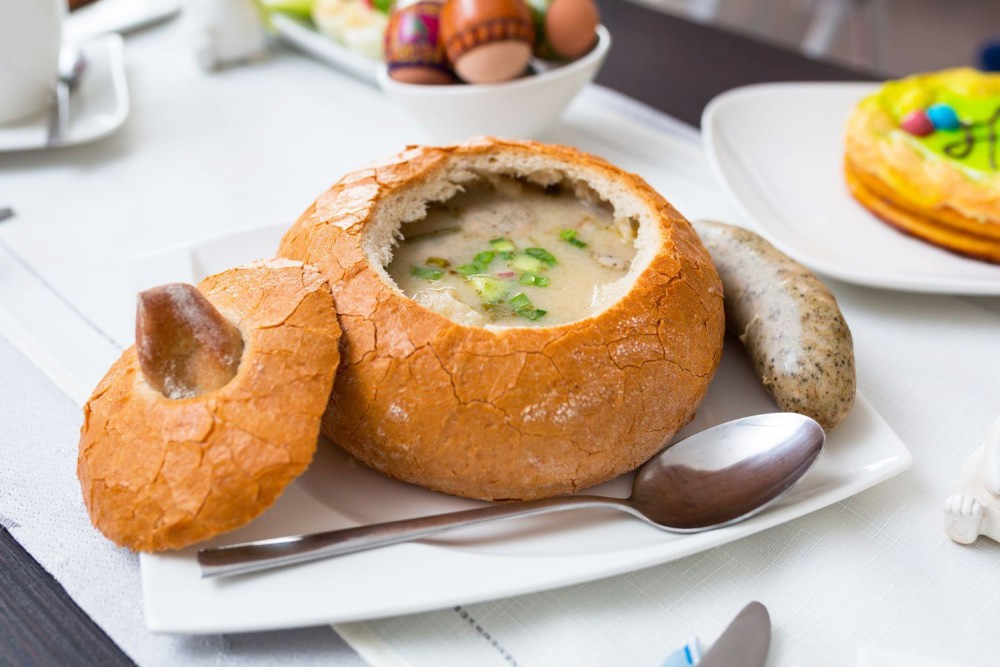
4. Gołąbki: Gołąbki are cabbage rolls stuffed with a mixture of ground meat (usually pork or beef) and rice or buckwheat. The rolls are baked or simmered in a tomato-based sauce until tender and served with mashed potatoes or a side of sauerkraut.

5. Golonka: Golonka is a portion of pork meat that includes the lower part of the shoulder bone and upper arm bone. This meat has become the basis for a dish of the same name, which reigns on both German and Polish tables.

6. Kotlet schabowy: Kotlet schabowy is a breaded pork cutlet that is similar to a Wiener Schnitzel. It is made by coating a boneless pork chop in breadcrumbs and frying it until golden and crispy. It is typically served with boiled or mashed potatoes and a side of sautéed vegetables.
7. Barszcz z uszkami: Barszcz is a traditional beetroot soup that is often served with small dumplings called uszka. Uszka are similar to mini-pierogi and are usually filled with a mixture of mushrooms and onions. The soup is usually garnished with a dollop of sour cream.
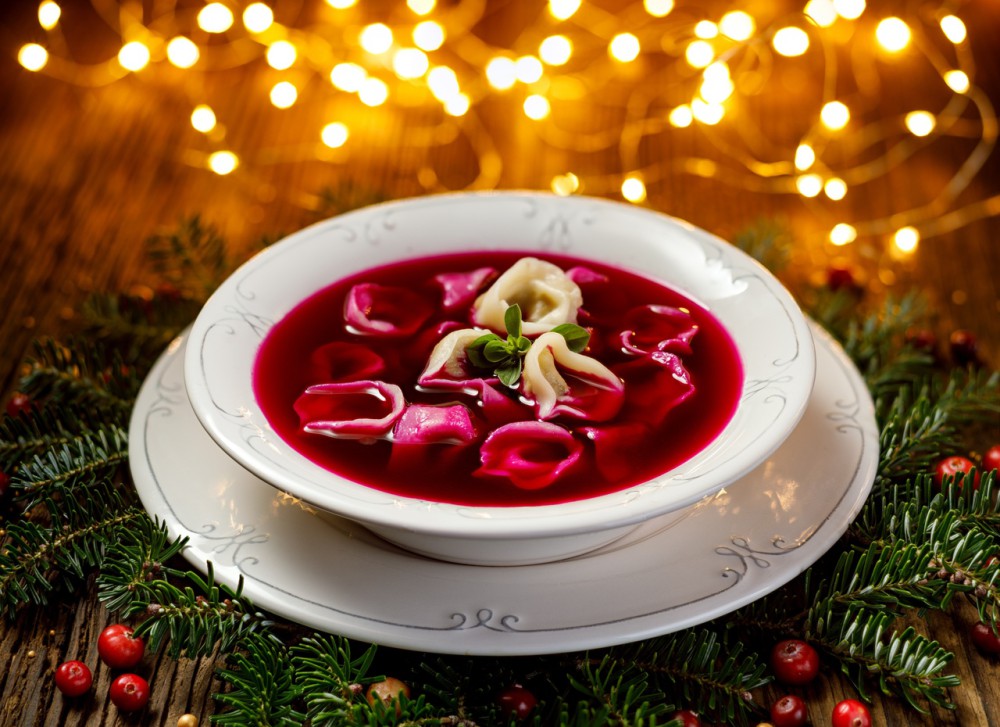
8. Makowiec: Makowiec is a poppy seed roll that is a popular dessert in Poland, especially during holidays. It consists of a sweet yeast-based dough rolled with a filling made from ground poppy seeds, honey, sugar, and sometimes nuts or raisins.

These are just a few examples of typical Polish meals. Polish cuisine offers a wide range of delicious and satisfying dishes, reflecting the country's culinary traditions and cultural heritage.
How many days do you need to visit Gdansk?
1. Is Gdańsk worth visiting?
Yes, Gdańsk is definitely worth visiting. It is a historic city located on the Baltic Sea coast of Poland and offers a unique blend of history, culture, and natural beauty. Gdańsk is known for its well-preserved medieval architecture, charming Old Town, and picturesque waterfront. It has a rich maritime heritage and was a significant center of trade in the past. Today, Gdańsk is a vibrant city with a thriving cultural scene, museums, beautiful beaches, and delicious local cuisine.
2. How many days do you need for Gdansk?
The number of days you need for Gdańsk depends on the depth of exploration you desire and the time available. Ideally, I would recommend spending at least 2 to 3 days in Gdańsk to get a good overview of the city and its main attractions. This timeframe allows you to explore the Old Town, visit museums such as the European Solidarity Centre and the Museum of the Second World War, take a boat tour on the Motława River, and even have time for a day trip to nearby Sopot or Gdynia.
3. What is special about Gdansk?
Gdańsk is special for several reasons. Firstly, its rich history and architectural beauty make it stand out. The city boasts well-preserved Gothic, Renaissance, and Baroque buildings, including the iconic Gdańsk Crane and the impressive St. Mary's Church. Gdańsk is also known for its maritime heritage and its connection to the Solidarity movement, which played a significant role in Poland's fight for democracy. The city's location on the Baltic Sea provides opportunities for relaxation at the beach and exploring the coastal areas.
4. Which is better Warsaw or Gdansk?
Comparing Warsaw and Gdańsk depends on your preferences and what you are looking for in a destination. Warsaw, as the capital city, offers a mix of historical significance, modernity, and a vibrant urban atmosphere. It has a wider range of cultural institutions, museums, and a diverse culinary scene. Gdańsk, on the other hand, is a smaller city with a more relaxed and coastal vibe. It is known for its rich history, maritime heritage, and charming Old Town. Both cities have their unique charm, and the choice between them would depend on your interests and what kind of experience you're seeking.
5. Is 2 days enough for Gdansk?
While you can see some of the main attractions in Gdańsk in 2 days, it might feel a bit rushed. With two days, you can explore the Old Town, visit museums, take a boat tour, and experience the local atmosphere. However, if you have the flexibility, I would recommend extending your stay to 3 or 4 days to fully immerse yourself in Gdańsk's culture, history, and nearby coastal areas.
6. Is 1 day enough for Gdansk?
One day is quite limited to fully experience Gdańsk, but if you're short on time, it is possible to get a glimpse of the city's highlights in a day. I would suggest focusing on the Old Town, exploring its streets, visiting St. Mary's Church, and taking a walk along the waterfront. However, keep in mind that you won't have much time to delve into museums, take boat tours, or explore other districts of the city.
7. Is it worth going to Gdansk?
Yes, Gdańsk is worth going to. It offers a unique blend of history, culture, maritime heritage, and natural beauty. The city's well-preserved architecture, charming Old Town, and its connection to significant historical events make it a fascinating destination to explore. Moreover, Gdańsk's coastal location adds a refreshing element, with beautiful beaches and a relaxed atmosphere.
8. Is it better to stay in Gdansk or Sopot?
Whether it's better to stay in Gdańsk or Sopot depends on your preferences. Gdańsk is the larger and more historically significant city, offering a wide range of attractions, museums, and a vibrant atmosphere. Sopot, on the other hand, is a resort town known for its beautiful sandy beaches, a lively promenade (Monte Cassino Street), and a variety of entertainment options such as bars, restaurants, and clubs. If you prefer a more relaxed beachside experience with a touch of luxury, Sopot might be the better choice. However, both cities are easily accessible from each other, allowing you to visit both during your stay.
9. Is Gdańsk better thank Kraków?
Comparing Gdańsk and Kraków depends on your preferences and what you are looking for in a destination. Gdańsk offers a coastal setting with a unique maritime heritage, beautiful architecture, and a relaxed atmosphere. It is known for its historical significance and charming Old Town. Kraków, on the other hand, is a landlocked city with a rich medieval history, well-preserved architecture, and a vibrant cultural scene. It is famous for its stunning Main Market Square, Wawel Castle, and as a gateway to Auschwitz-Birkenau. Both cities have their own distinct character and attractions, so the choice would depend on your personal interests and preferences.
10. What is Gdansk famous for?
Gdańsk is famous for several reasons. It holds historical significance as the birthplace of the Solidarity movement, which played a crucial role in Poland's fight for democracy. The city is also known for its well-preserved medieval architecture, particularly in the picturesque Old Town, which includes iconic landmarks such as St. Mary's Church and the Gdańsk Crane. Gdańsk's maritime heritage and its connection to trade and shipbuilding have also contributed to its fame.
11. Why do people go to Gdansk?
People go to Gdańsk for various reasons. Some are drawn to its rich history and the opportunity to explore its well-preserved medieval architecture. Others visit for its maritime heritage and the chance to experience the coastal ambiance and beautiful beaches. Gdańsk also attracts visitors with its vibrant cultural scene, including museums, galleries, and events, as well as its delicious local cuisine and charming Old Town atmosphere.
12. Is Gdańsk German or Polish?
Gdańsk is a Polish city with a complex history. Over the centuries, it has been part of different political entities and experienced various influences. Historically, Gdańsk was a predominantly German-speaking city and was known as Danzig. However, following the end of World War II, Gdańsk became a Polish city again, and the majority of its population is now Polish-speaking. Today, Gdańsk is firmly part of Poland and reflects Polish culture and identity.
13. How do Polish people pronounce Gdansk?
In Polish, Gdańsk is pronounced as "Gdańsk" [ɡdaɲsk]. The "ń" is pronounced similar to the "ni" in "onion." The "ą" has a nasal sound, similar to the "on" in "long."
THINGS TO DO IN GDANSK AND SOPOT
Location:
Sopot is a seaside resort town located on the Baltic Sea coast in northern Poland. It is situated between the cities of Gdańsk and Gdynia and forms part of the Tricity metropolitan area.
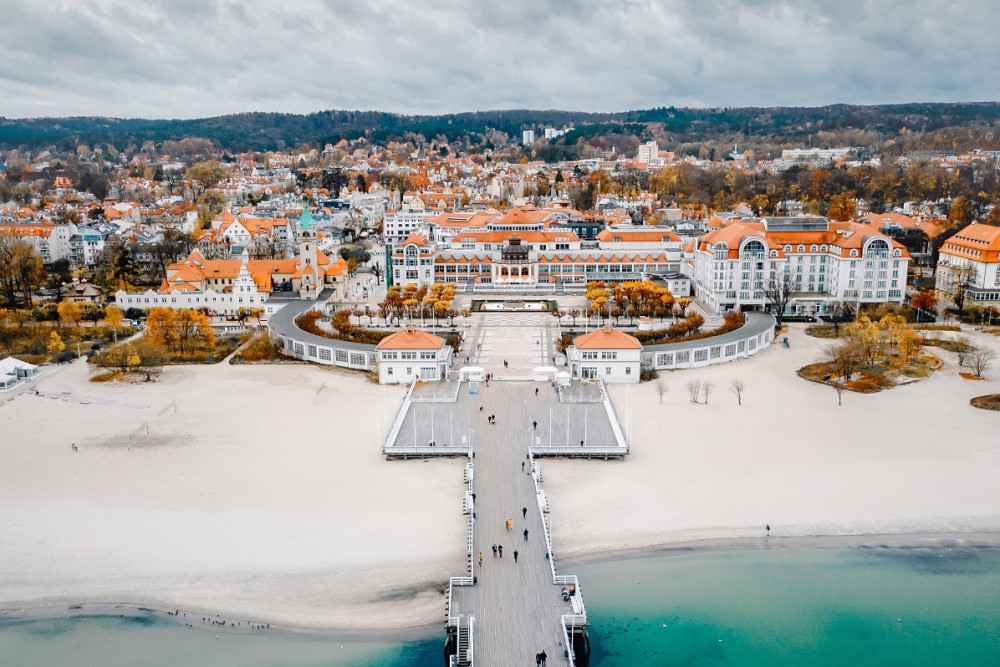
History:
Here is an overview of the history of Sopot:
- Early History: The area of Sopot has been inhabited since ancient times, with evidence of settlements dating back to the Stone Age. It was initially a fishing village and later became a popular destination for spa treatments due to the presence of natural mineral springs.
- Development as a Resort Town: In the 19th century, Sopot began to develop as a fashionable resort town. The construction of a wooden pier in 1827 and the establishment of the first bathing facilities attracted tourists, primarily from nearby Gdańsk and other parts of Europe. The town gained a reputation as a place for relaxation, leisure, and health treatments.
- Growth and Architecture: Sopot experienced rapid growth in the late 19th and early 20th centuries. Grand hotels, luxurious villas, and elegant spa buildings were constructed along the seaside promenade, showcasing a mix of architectural styles, including Art Nouveau and neoclassical influences. The town's development was influenced by the influx of wealthy visitors and the desire to create a sophisticated resort atmosphere.
- Interwar Period and World War II: In the interwar period, Sopot became part of the Free City of Danzig, an autonomous city-state under the League of Nations. The town continued to attract visitors, and its reputation as a resort destination grew. During World War II, Sopot, like the rest of the region, was occupied by Nazi Germany, and many of its buildings were damaged or destroyed.
- Post-War Period: After the war, Sopot was incorporated into Poland and underwent reconstruction and restoration. The town regained its popularity as a seaside resort and gradually regained its former splendor. Many of the historic buildings were reconstructed, including the iconic wooden pier, making it a prominent landmark and tourist attraction.
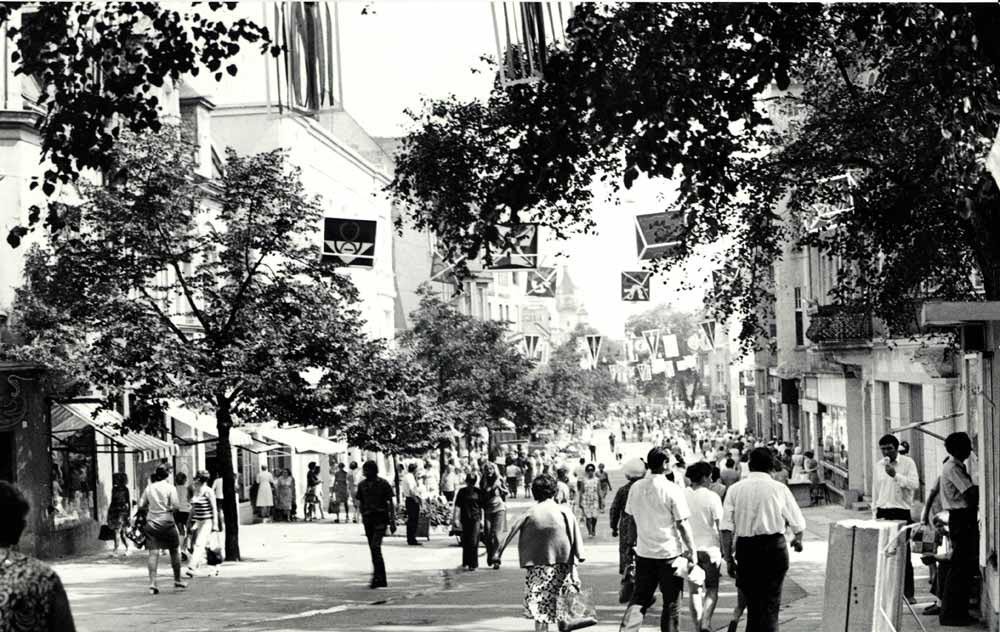
Trivia:
1. Sopot Pier: The Sopot Pier, also known as the Sopot Molo, is the town's most recognizable feature. Built in 1827, it is the longest wooden pier in Europe, extending into the Baltic Sea for approximately 511 meters. The pier offers scenic views of the coastline and has become an emblem of Sopot.
2. Sopot Festival: Sopot is renowned for its music festival, known as the Sopot International Song Festival. Established in 1961, it is one of the oldest and most prestigious music competitions in Europe, attracting renowned artists and showcasing popular music from around the world.
3. Monte Cassino Street: Monte Cassino Street, commonly referred to as "Monciak," is the main pedestrian street in Sopot. Lined with shops, cafes, and restaurants, it is a vibrant hub of activity and a popular gathering place for both locals and tourists.
4. Forest Opera: Sopot is home to the Forest Opera, an open-air amphitheater nestled in the nearby Tricity Landscape Park. The venue hosts various cultural events, including concerts, opera performances, and theater productions, surrounded by the natural beauty of the forest.
5. Bohaterów Monte Cassino Street: Sopot's main street is named after the Battle of Monte Cassino, a significant military engagement during World War II. The street was renamed in 1946 to commemorate the Polish soldiers who fought in the battle.
6. The Crooked House: Located in Sopot, The Crooked House (Krzywy Domek) is an architectural curiosity. Its unique, wavy design, inspired by the fairytale illustrations of Jan Marcin Szancer and Per Dahlberg, makes it a popular attraction and a favorite spot for photographs.
7. Sopot Beach: Sopot Beach stretches along the Baltic Sea and offers a wide expanse of golden sand. The beach is a popular destination for sunbathing, swimming, and water sports during the summer months.
8. Sopot Lighthouse: The Sopot Lighthouse, also known as the Sopot Pier Lighthouse, stands at the entrance of the pier. It serves as a navigational aid for ships and adds to the picturesque coastal scenery.
9. The Hippodrome: Sopot is home to the Sopot Hippodrome, a horse racing track and entertainment venue. It hosts various equestrian events, including horse races, show jumping competitions, and equestrian festivals.
10. Health Resorts: Sopot has a long tradition as a health resort due to its mineral springs and therapeutic climate. Visitors come to enjoy spa treatments, wellness programs, and relaxation in the town's many sanatoriums and health resorts.
Sopot's history as a resort town, its unique architecture, and its vibrant atmosphere make it a popular destination for travelers seeking a combination of seaside relaxation, cultural experiences, and entertainment.

How to get from Gdansk to Sopot
- Train: The most convenient and popular way to travel from Gdańsk to Sopot is by train. There are frequent train services connecting the two cities, and the journey takes approximately 15 minutes. Trains depart from Gdańsk Główny (the main train station) and arrive at Sopot Station, which is located near the center of Sopot.
- Tram: Another option is to take a tram from Gdańsk to Sopot. Tram line 8 operates between the two cities, offering a scenic route along the coast. The journey takes around 30 minutes, depending on traffic and the number of stops. Trams depart from Gdańsk Główny and terminate near Sopot's main attractions, including the Sopot Pier and Monte Cassino Street.
- Taxi: Taxis are readily available in Gdańsk, and you can easily hire one to travel to Sopot. It's advisable to use licensed taxis and ensure that the fare is agreed upon before the journey begins. The travel time by taxi is typically around 15 minutes, depending on traffic conditions.
- Bike: For those who enjoy cycling, there are bike paths that connect Gdańsk and Sopot along the coast. You can rent a bike in Gdańsk and enjoy a scenic ride to Sopot, taking in the beautiful views of the Baltic Sea along the way.
How to get from Gdansk to Gdynia
- Train: Trains offer a convenient and efficient way to travel from Gdańsk to Gdynia. The journey takes approximately 20-30 minutes, depending on the train service. Trains depart from Gdańsk Główny and arrive at Gdynia Główna, the main train station in Gdynia. There are frequent connections throughout the day, making it easy to plan your trip.
- SKM (Fast Urban Railway): The SKM is a commuter train service that connects various cities in the Tricity area, including Gdańsk, Sopot, and Gdynia. You can take an SKM train from Gdańsk Główny to Gdynia Główna, with a travel time of approximately 20-30 minutes. The SKM trains are a popular mode of transportation for daily commuting and offer a convenient way to explore the Tricity area.
- Taxi: Taxis are available in Gdańsk, and you can hire one to travel to Gdynia. The journey time by taxi is typically around 20-30 minutes, depending on traffic conditions. It's recommended to use licensed taxis and agree on the fare before the journey begins.
- Bus: There are also bus services that connect Gdańsk and Gdynia. The travel time by bus varies depending on the route and traffic, but it generally takes around 30-45 minutes. Bus schedules and routes can be checked online or at bus stations in Gdańsk.
Both Sopot and Gdynia are easily accessible from Gdańsk, whether you choose to travel by train, tram, taxi, or other means of transportation. These cities are well connected and offer a range of options for a convenient and enjoyable journey.
WHAT DO DO IN GDANSK AT NIGHT?
Gdańsk Nightlife:
Gdańsk, Poland, offers a vibrant and diverse nightlife scene with various options for entertainment, dining, and socializing. Here are some popular venues and areas to explore:
a) Długi Targ (Long Market) and Długa Street: This historic area of Gdańsk is not only charming during the day but also comes alive at night. You'll find a wide selection of bars, clubs, and restaurants catering to different tastes and preferences.
b) Old Town: Gdańsk's Old Town is a UNESCO World Heritage Site and is particularly atmospheric at night. Take a stroll along the streets to admire the beautifully lit architecture, including the Gothic-style Neptune's Fountain and the colorful façades of the houses.
c) Piwna Street: Located in the heart of the Old Town, Piwna Street is known for its bustling nightlife. It is lined with pubs, bars, and clubs where you can enjoy live music, dance, or simply relax with a drink.
d) Stogi Beach: During the summer months, Stogi Beach is a popular spot to enjoy the nightlife in Gdańsk. You'll find beach bars, open-air clubs, and music events where you can party and dance by the seaside.
e) Sopot: While not technically in Gdańsk, Sopot is a neighboring city known for its vibrant nightlife and is easily accessible by train. The main attraction is Monte Cassino Street, lined with bars, clubs, and restaurants offering a lively atmosphere.
Places to see at night:
Apart from the nightlife venues mentioned above, Gdańsk offers several attractions that are worth visiting during the evening hours. Here are a few suggestions:
a) Gdańsk Crane and Motława River: The Gdańsk Crane, an iconic medieval structure, looks especially impressive when illuminated at night. Take a leisurely stroll along the banks of the Motława River to enjoy the beautiful views and the reflections of the city lights on the water.
b) Westerplatte Peninsula: Known for its historical significance as the site of the first battle of World War II, the Westerplatte Peninsula offers a peaceful and contemplative atmosphere at night. Explore the memorial and enjoy the serenity of the surroundings.
c) Gdańsk Shipyard: The Gdańsk Shipyard played a crucial role in the Solidarity movement, which led to the fall of communism in Poland. Visit the area at night to see the iconic gate and the symbolic surroundings that represent an important part of Polish history.
d) St. Mary's Church: St. Mary's Church is the largest brick church in the world and a prominent landmark in Gdańsk. The church looks magnificent when illuminated, and you can even climb to the top of the tower for a panoramic view of the city.
e) Gdańsk Old Town by night: Exploring the narrow streets and alleys of the Gdańsk Old Town after sunset offers a unique perspective. Admire the beautifully lit facades, soak in the medieval ambiance, and enjoy the quieter atmosphere compared to the bustling daytime hours.
Remember to check the opening hours and any specific regulations or restrictions related to visiting these places at night, as they may vary.
Is Gdansk Worth Visiting?
Top 10 reasons to visit Gdansk
1. Maritime History: Gdańsk has a rich maritime heritage, with a fascinating history as a major seaport and shipbuilding center. Explore the Maritime Museum and learn about the city's naval past.
2. Amber Capital: Gdańsk is known as the Amber Capital of the world. Visit the Amber Museum to discover the history, beauty, and cultural significance of this unique gemstone.
3. Long Market: Stroll along the Long Market (Długi Targ), the heart of Gdańsk's historic center. Admire the colorful facades, Gothic architecture, and enjoy the lively atmosphere of the street.
4. European Solidarity Center: Learn about the history of the Solidarity movement and its impact on the fall of communism in Poland. The interactive exhibitions at the European Solidarity Center provide insight into this significant period.
5. Modernist Architecture: Gdańsk showcases impressive examples of modernist architecture, including the famous "Crooked House" (Krzywy Domek) and the Uphagen House, which is a well-preserved 18th-century townhouse.
6. Oliwa Park and Cathedral: Escape the city center and visit Oliwa Park, a beautiful green oasis. Explore the stunning Oliwa Cathedral known for its Baroque organ and charming surrounding park.
7. St. Catherine's Church: Visit St. Catherine's Church, an imposing Gothic church that offers panoramic views of Gdańsk from its tower. The church is also known for its exquisite stained glass windows.
8. Westerplatte: Explore the historic site of Westerplatte, where World War II began. Visit the memorial and learn about the bravery and resilience displayed during the first battle of the war.
9. Bohaterów Monte Cassino Street: Wander down Bohaterów Monte Cassino Street, commonly known as the "Monciak" in the nearby city of Sopot. This bustling promenade offers a vibrant atmosphere with numerous shops, restaurants, and entertainment venues.
10. Gdańsk Beaches: Enjoy the sandy beaches of Gdańsk, such as Stogi Beach and Brzeźno Beach. Relax by the sea, go for a swim, or take part in various water sports activities.
Which is better Warsaw or Gdansk?
- Warsaw is the capital of Poland and offers a bustling, cosmopolitan atmosphere with a blend of modern and historic attractions. It has a vibrant nightlife, diverse culinary scene, and a wealth of museums and cultural institutions.
- Gdańsk, on the other hand, is a historic port city with a distinctive maritime character. It offers a unique blend of rich history, charming architecture, and a more relaxed coastal atmosphere. Gdańsk is known for its maritime heritage, amber trade, and its role in the Solidarity movement.
Ultimately, the better choice depends on your personal preferences. If you enjoy a bustling capital city with a diverse range of attractions, choose Warsaw. If you prefer a coastal city with a focus on maritime history and a more laid-back vibe, opt for Gdańsk.
Which is better Gdansk or Krakow?
- Gdańsk is a maritime city with a focus on its seaport history, amber trade, and modernist architecture. It offers a mix of historical attractions, a lively waterfront, and a coastal vibe.
- Krakow, on the other hand, is known for its rich history, stunning architecture, and a well-preserved Old Town. It was the royal capital of Poland, and its attractions include the Wawel Castle, the UNESCO-listed Krakow Old Town, and the lively cultural scene.
Both cities have their own unique charm and attractions. Gdańsk offers a maritime and coastal experience, while Krakow is renowned for its historical sites and cultural ambiance. Consider your interests and preferences when deciding between the two.